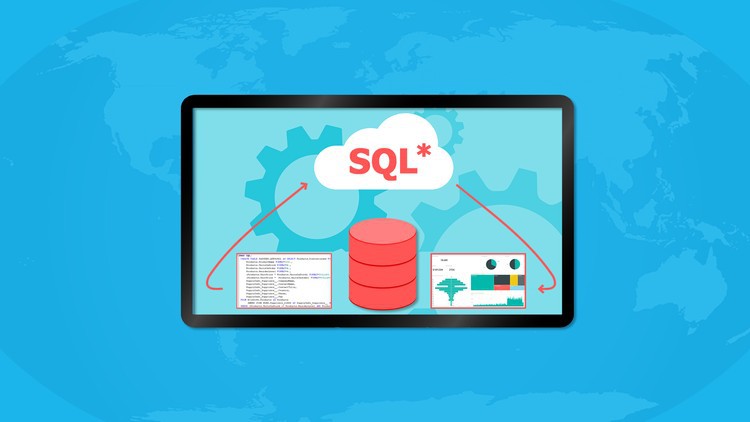
A comprehensive course to teach you how to complete SQL queries
What you will learn
Manage and Interact with Datasets with SQL
Provide Data in Order to Answer Top Questions for Meetings
Write Complex SQL Queries Using Table Joins
Retrieve Proper Data from a Database Using a SQL WHERE Clause with Criteria
Obtained a knowledge of SQL, and MySQL, allows students to apply for jobs in the IT sector.
Have a detailed knowledge and understanding of using SQL, one of the most widely used databases in the world.
Complete basic SELECT statements querying against a single table
Filter data using the WHERE clause
Sort data using the ORDER BY clause
Understand the difference between the INNER JOIN, LEFT/RIGHT OUTER JOIN, and FULL OUTER JOIN
Complete SQL statements that use aggregate functions
Filter groups of data using the HAVING clause
Group data together using the GROUP BY clause
Description
Do you want to learn a skill that can help you earn nearly $100,000 per year? If so, then this course is for you!
SQL (Structured Query Language) is the language we use to interact with databases that store data. This allows us to retrieve data with ease and simplicity. As terms like business intelligence and big data become more familiar, businesses will need more people to learn the SQL language.
This course will teach you how to use the SQL language.
You will have plenty of video lessons to teach you the majority of the content. Each section includes practice problems with proper explainations. On completion of the course you will be able to query and extract insights from any dataset.
LEARN SQL WITH MySQL
In order to make intelligent business decisions you need the proper data. In order to get the proper data you will need to communicate with and query data within a database. This is where SQL comes into play. SQL stands for Structured Query Language. It’s the language used to communicate with a database and more importantly the data needed to make intelligent decisions that will save time and money.
WHY THIS COURSE
This SQL course starts with the absolute basic building blocks necessary to communicate effectively with any database. You’ll learn how to query and manage a database using MySQL. MySQL is a free open-source relational database management system (RDBMS), used by many of the world’s largest organizations.
Each section of the course will focus on a key topic of working with SQL. The video lectures have been created so you can follow along as the instructor demonstrates each concept. At the end of each section you can test your understanding through a section quiz and exercise. Once you complete a section the next section will build on the topics of the previous section. This encourages your learning as you build upon the knowledge you learn as you move from one section to the next.
This course is not just a sit back and watch the instructor type on the screen kind of course. The lectures and course flow has been designed to help you engage in the topic and participate by writing your own SQL. The TRUE LEARNING happens when you apply what you’re learning and try it yourself.
The course also contains downloadable resources you can use away from the course as you continue to learn SQL. The QA board found within the course offers you the opportunity to ask questions and get answers from the instructor and interact with the other students enrolled in the course.
COURSE OBJECTIVES
In this SQL course you will learn the fundamental building blocks of creating, querying and working with databases using MySQL.
- Learn Proper SQL Syntax Using the MySQL Workbench
- Learn Relational Database Design Concepts
- Use the SQL SELECT Statement in Order to Query Data from a Database
- Use Column Alias to Give additional Context and Meaning to the Data
- Learn How to Filtering Database Query Results Using the SQL Where Clause
- Create Advanced Queries by Using the Proper Filter Operators
- Use the SQL ORDER BY Keyword to Sort the Results of a Query
- Learn How to Properly Group Data and Create Calculations for Reporting
- Use the SQL HAVING Clause to Filter within Data Groups
- Create a MySQL Database from Scratch
- Learn How to Create Tables and Manage Records within the Tables
- And Much More…
Content